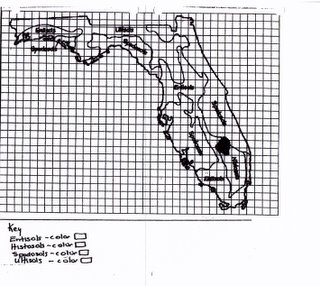Friday, 27 January and Monday, 30 january, 2006




Using information from classroom activities and the novel A Journey to the Center of the Earth:
Students should be able to:
-read a work of science fiction to find the science facts it contains.
-determine the soil types found in Florida.
-calculate the percentages of the different soil types found in Florida.
Students on Friday read an article dealing with the wooly mammoth and its relationship to modern day elephants. The article determined, that, by DNA testing, the wooly mammoth was more closely related to the Indian elephant than to the African elephant. Students used Venn diagrams to compare and contrast the different elephants.
Monday, students read from the book A Journey to the Center of the Earth. Axel becomes separated from his uncle and Hans, but luckily, is found. They find a large sea underground. In the sea are animals that have been extinct for hundreds of thousands of years. They continue on their journey to the earth's center.
After reading, students worked on their soil project. They calculated the percent of the different soils found in Florida.
Home learning was to continue work on the written report on erosion, due February 6/7. Blocks 1, 3, and 5 also are reminded that HL #7 is due on Tuesday, Jan 31.























